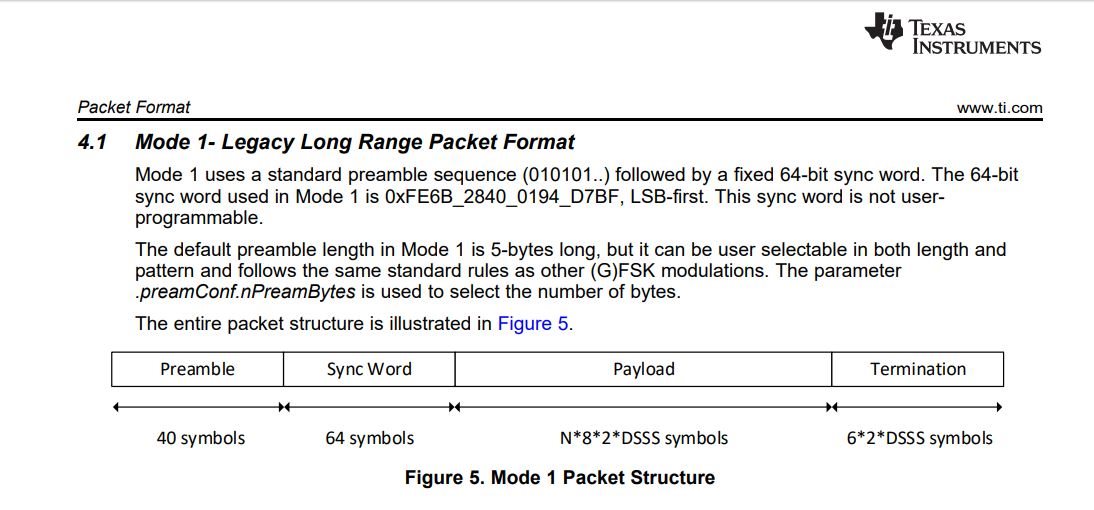Hi guys !
I would like to understand very well those two categories of modes that Ti provides for configuring my transmitted packets:
One mode called : Mode 1- Legacy Long Range Packet Format and Im attaching a photo of ti reference:
So in this mode, what should I configure in my smartRF to use this mode of configuration ? could you show me where's the option for using this mode in my smartRF studio tool? and at which deviation should I configure my smartRF studio for this mode?
Also what's my syncword Data in HEXA this mode use? , what's the payload length in this mode? I didn't understand what's N and DSS symbols that are found in multiplication sum for
length of payload:N*8*DSS symbols...what should its values be(value of DSS, N) ? could you please explain and illustrate all those parameters of mode 1 by an example of transmitted packet with explaining its transmitted data and how it looks once transmitted? thanks alot!


